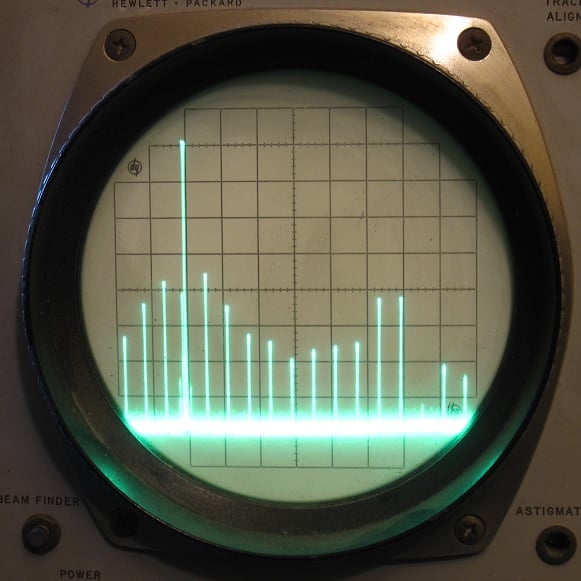I will need to get a laptop in the foreseeable future, and I really want to stick to Linux. However, I may need to be out-of-home for 12+ hours straight in a day. After some research, it seems people are generally not that impressed with battery life on Linux?
The laptop does not need to do anything heavy duty, as I will remote back into my already very beefy desktop back home.
I guess a common solution to this light use case is M2 MacBook if one wants to completely throw battery concern out of the window. Well… let’s just say it’s a love-hate relationship.
My thinkpads have always gone further on ubuntu than on windaz.
Yeah my x1 carbon thinkpad has great battery life with Linux.
I’ll use power saver in fedora if needed.
Is that just forcing the cpu scheduler? I use ubuntu-mate, and theres just a dropdown widget to switch between balanced/power/powersave.
Some addition power management tools I suppose?
tlp is enough
vanilla with no configuration.
Tlp and Intel xtu for undervolting (lowers temps and power consumption, but newer cpus don’t support it) are pretty good ideas. If battery life is your perogative, try avoiding discrete gpus, they can be a pain to make sure they don’t drain battery in Linux. 14hrs is possible, but you have to spec properly (think thinkpad t480 with dual batteries, and a low power display).
It depends on the distro and how you configure it.
For distros that just work out of the box like ubuntu or manjaro it should be about the same as windows unless there’s something weird in your laptop, but in general there are 3 really useful tools that I recommend you check out are:
- TLPUI: a user interface for TLP, a power management tool that’s used in most distros. With this you can configure your min/max clock speeds for your CPU and GPU when on battery vs plugged in, CPU governor, display brightness, automatic poweroff of drives and USB devices, and many other things
- throttled (https://github.com/erpalma/throttled): originally created to workaround a BIOS bug on some thinkpads, this can now set things like turbo duration, power limits and undervolting, all based on whether you’re on battery or plugged in
- LACT: if you have an AMD GPU, you can use this to undervolt it or to set a better power limit
Setting these up properly on my thinkpad t480 with manjaro gave it a good 50-60% of extra battery life for what I use it for (I’m a teacher so mostly presentations and various IDEs). You should check them out.
It depends. If you get a fairly standard laptop from a brand that has some Linux awareness (Lenovo, Dell, Framework,…) you should be alright out of the box.
Gaming laptops generally are a bit worse since GPU switching is not as well integrated. I managed to get mine to parity but with a lot of tweaking. Devices with only integrated graphics tend to be fine out of the box.
It’s very dependent on the laptop. Some ThinkPad get better battery life than on Linux because a lot of kernel devs use them.
My X1 Carbon gets about 15% better battery life with PopOS vs. Windows.
That’s new info for me thanks. Never knew thinkpad can excel in this department.
It depends on the ThinkPad. They’re not all created equally and the quality between models varies wildly.
Gaming laptops will have marginally worse battery life when properly configured. But in general you’ll get better battery life on Linux in my experience.
I just spent two weeks trying to convince a new intel Zenbook laptop to have decent battery life. It would eat the battery both awake and asleep. Went through the Arch wiki on suspend issues. Discovered that the bios has a broken vestigial S3 suspend (which more and more vendors are shipping); the modern suspend mode is now S0ix (s2idle). Found that my system was only getting into C2 and C3 out of C10 levels of S0ix power-saving-state nirvana.
Somehow, I lucked upon finding that the Intel Rapid Storage/VMD setting in bios was what kept the processor from ever going to lower power states. Once I disabled that, nearly everything else fell into place. The cpu ran cooler at normal use, battery lasted longer, and power burn during sleep went from 4% an hour to negligible.
This was fun. Not one tool successfully pointed me at the real problem. It took one random dell support post to set me on the right path. https://bugzilla.kernel.org/show_bug.cgi?id=211879. I spent two weeks chasing the same problem that somebody else had in 2021. Linux doesn’t have a [WARNING] for detecting a damned VMD, and it doesn’t have a means to tell the VMD to fuck off? The stupid hardware doesn’t have the sense to not fuck up the processor if it isn’t attached to its Windows-only driver? I don’t understand how anybody has been able to use an intel for the last couple of generations if this is how they work.
In conclusion - battery life is actually pretty great now. But it was a bloody nightmare to get here.
I actually get 2x the battery life of windows on my ThinkPad. If you run a distro like Arch or Gentoo you will have to configure some things to get good battery life, but with Mint or something it just works™. If you want a whole lot of battery life you could get a laptop that has a replaceable battery, like the T480 (still plenty powerful for Linux), then your max life is limited only by how many extra batteries you are willing to carry.
I’ve installed a few distros on my gaming laptop for fun and something I’ve noticed was that your desktop environment may have a large impact on your battery life.
With Mint, my battery would die in like 2.5 hours. After installing Arch with the Budgie desktop environment, I’ve noticed that my battery life was twice as long as when it was running on Mint.
Not bad at all. With some tweaking, it is commensurate with other operating systems.
On my ThinkPad I get far more battery life than I ever did on windows
It depends on a few factors. Stock laptop experience with no power management software will likely result in poor battery life. You will need some kind of power management like TLP, auto-cpufreq, or powertop to handle your laptop’s power management settings.
Second is the entire issue of dedicated GPUs and hybrid graphics in laptops, which can be a real issue for Linux laptops. In my own laptop with a dGPU, I am reasonably certain that the dGPU simply never turns off. I have yet to figure out a working solution for this, and so my battery life seems to be consistently worse than the Windows install dual-booted with it on the same machine.
If your dGPU supports rtd3 power management, it should (almost) completely power off when not in use. For me the battery life changes a lot: is something like 2 hr vs 10hr battery life with the GPU off, which is very noticeable.
In everything I have seen, there has been no way to turn it off fully (laptop with a GTX 1060). Nvidia x server settings shows no option for a power saver mode, and even Optimus-manager set to integrated graphics only does not seem to have changed it. It seems to continuously idle at the minimum clock speed at around 5W of draw, according to programs like nvtop.
On my Linux laptop with a Nvidia card, there is a Nvidia program which lets you switch between dedicated or on-board graphics, or on-demand where applications can request the graphics card. Before that the dedicated card was always on. I’m on mobile at the moment, but there is an official Nvidia website with drivers and other programs to control this. I assume the same for AMD, but I haven’t checked.
I’ve got a Surface Laptop 3 running Fedora that is always dead after an extended sleep. Actual working battery life is not bad though.
deleted by creator
It really depends on the hardware and your use cases (ie. workflow).
I have a laptop (Dell Latitude 7420) with an integrated GPU (all Intel Tiger Lake), and I regularly get between 8 - 10 hours of battery life with just using terminals and web browsers (Firefox).
On GNOME, you will want to take advantage of the power profiles. With Pop, you can take advantage of their power management system. Otherwise, you can use something like TLP to minimize your power usage.
Moreover, if you are watching videos, then you want to make sure it is GPU accelerated and using the builtin hardware codecs rather than relying on the CPU to do the decoding.
I think that 12 hours on Linux on Intel/AMD is a stretch… but 8-10 hours is achievable and realistic (from my experience anyway).
I’ve never really noticed a huge difference with the Dell XPS models we use at my work. There’s a developer edition of that laptop that ships with Ubuntu, though, so they might have more optimizations than some manufacturers.
I think most people would recommend getting a laptop that has manufacturer support for Linux, which includes dedicated Linux laptop companies (like System76) but also certain Dell and Lenovo models. (There’s several others too. Those are just the ones I know off the top of my head.)
Yep I’m looking at system76. Not sure about how valid the 14h battery life claim is though. That seems awfully optimistic on a 10-core Intel chip.
My Tuxedo Pulse 15 (Gen 1) had 12h of battery life doing office work, when it was new. Now with some degradation, it still gets 9h. Of course that changes heavily depending on workload and screen brightness









